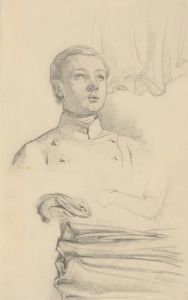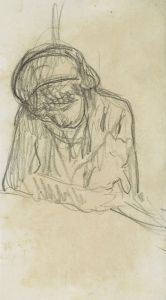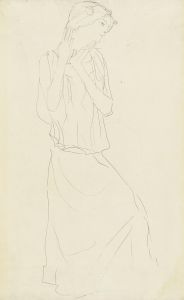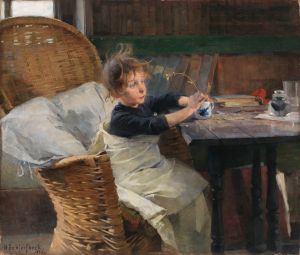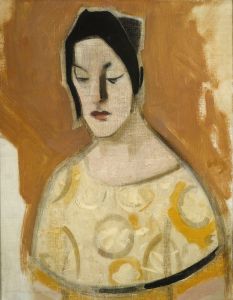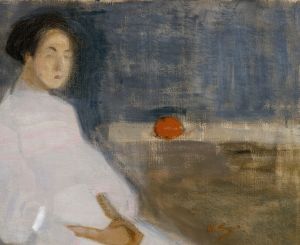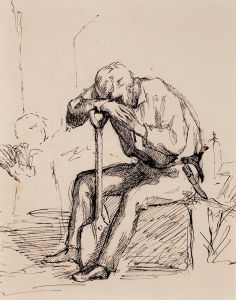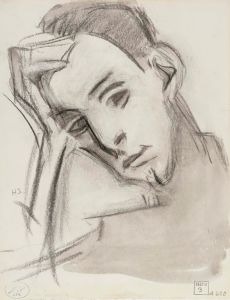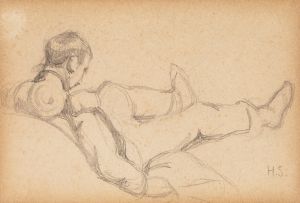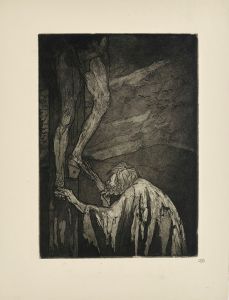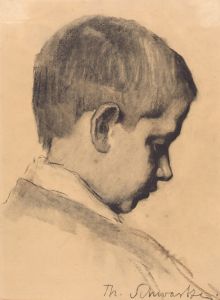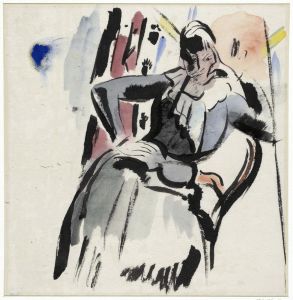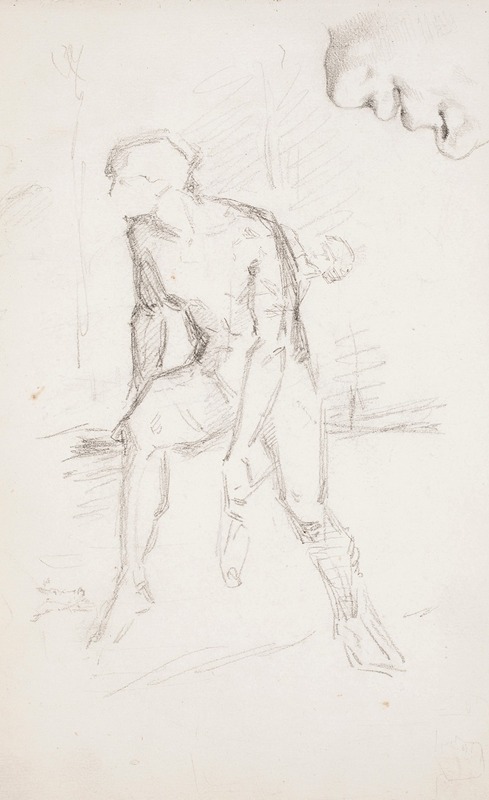
Nenä, suu ja leuka ; istuva käsivarttaan roikuttava mies
A hand-painted replica of Helene Schjerfbeck’s masterpiece Nenä, suu ja leuka ; istuva käsivarttaan roikuttava mies, meticulously crafted by professional artists to capture the true essence of the original. Each piece is created with museum-quality canvas and rare mineral pigments, carefully painted by experienced artists with delicate brushstrokes and rich, layered colors to perfectly recreate the texture of the original artwork. Unlike machine-printed reproductions, this hand-painted version brings the painting to life, infused with the artist’s emotions and skill in every stroke. Whether for personal collection or home decoration, it instantly elevates the artistic atmosphere of any space.
Helene Schjerfbeck (1862–1946) was a Finnish painter known for her modernist approach and innovative techniques. Among her extensive body of work, the painting titled Nenä, suu ja leuka; istuva käsivarttaan roikuttava mies (translated as Nose, Mouth and Chin; Seated Man with Arm Hanging Down) is one of her lesser-known pieces. This artwork reflects Schjerfbeck's characteristic focus on human figures and her ability to capture subtle expressions and emotions through minimalistic yet evocative brushwork.
The painting is believed to have been created during the early 20th century, a period when Schjerfbeck was transitioning from her earlier naturalistic style to a more modernist and abstract approach. This shift is evident in the simplified forms and the emphasis on essential features, such as the nose, mouth, and chin, as indicated in the title. The work demonstrates her interest in reducing details to their most fundamental elements, a hallmark of her mature style.
The composition includes a seated male figure with his arm hanging down, a pose that conveys a sense of introspection or weariness. Schjerfbeck often explored themes of vulnerability and the human condition in her portraits, and this painting is consistent with that focus. The muted color palette and restrained use of detail further enhance the contemplative mood of the piece.
While Schjerfbeck is best known for her self-portraits and portraits of women, this painting highlights her versatility in depicting male subjects. It also underscores her ability to convey psychological depth through minimalistic representation. The title itself suggests a dual focus on both the physical features of the subject and the overall posture, emphasizing the interplay between form and emotion.
The current location of Nenä, suu ja leuka; istuva käsivarttaan roikuttava mies is not widely documented, and it is unclear whether it resides in a public collection or remains in private hands. Like many of Schjerfbeck's works, it may have been part of exhibitions during her lifetime or included in retrospectives after her death. However, specific details about its provenance or exhibition history are not readily available.
Helene Schjerfbeck's contributions to Finnish and European art have been widely recognized, and her works continue to be studied for their innovative approach to portraiture and modernism. This painting, though not as famous as some of her other pieces, exemplifies her ability to distill complex emotions into simple yet powerful visual forms.





